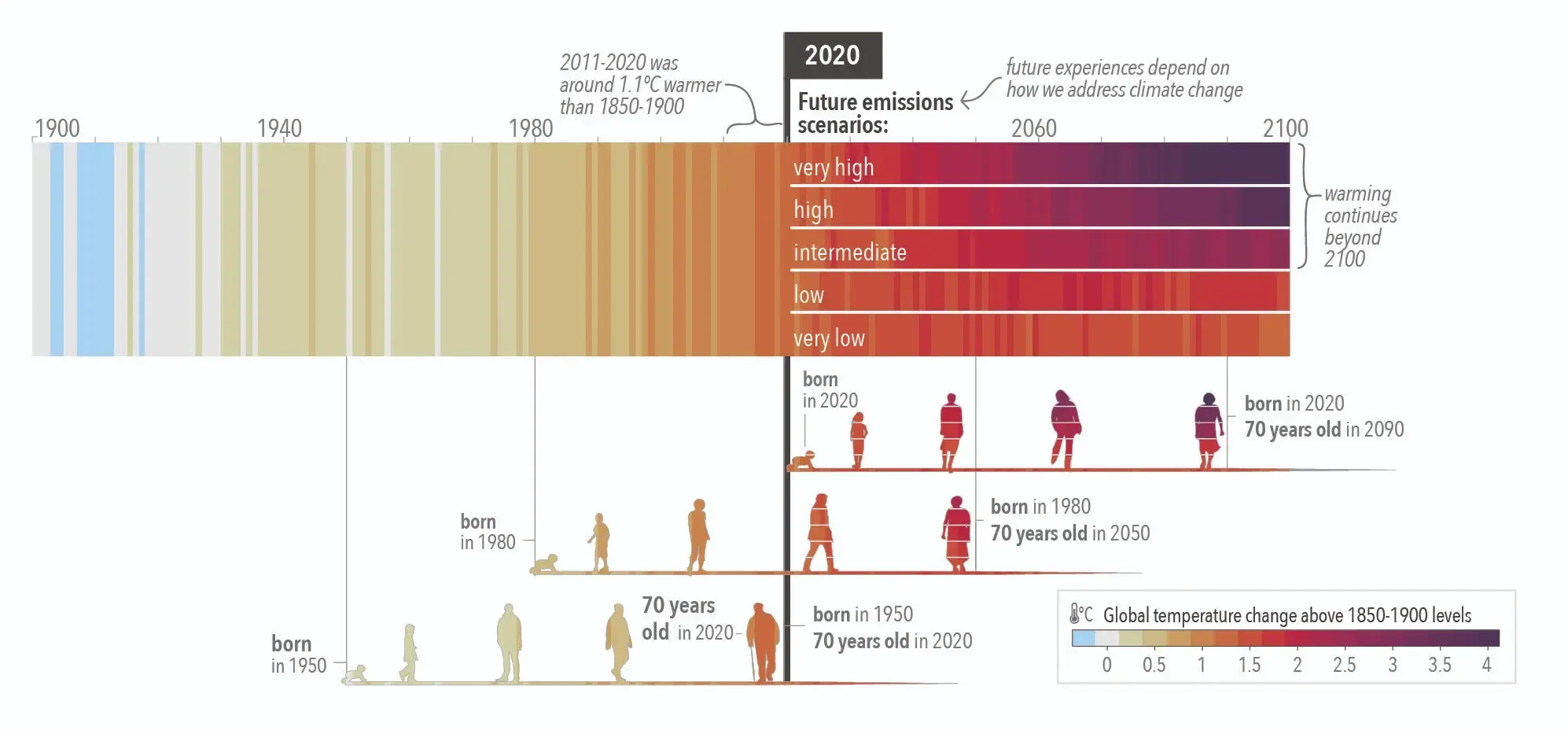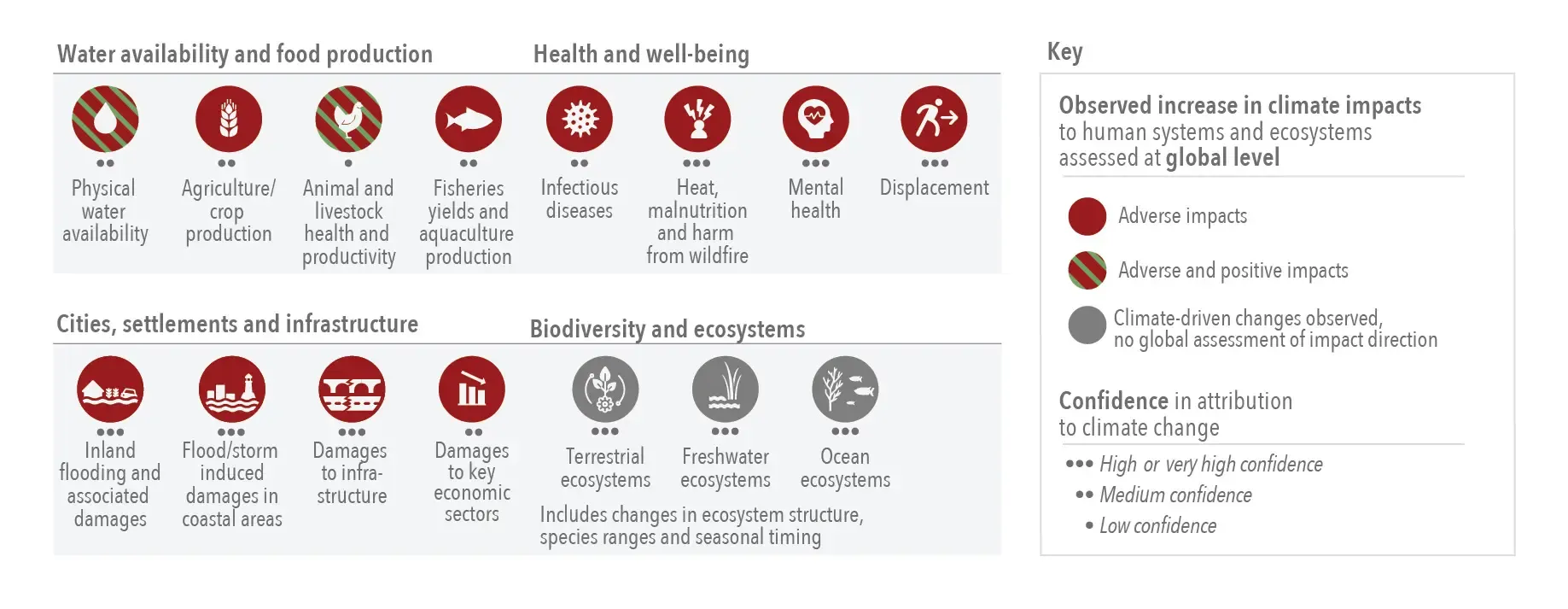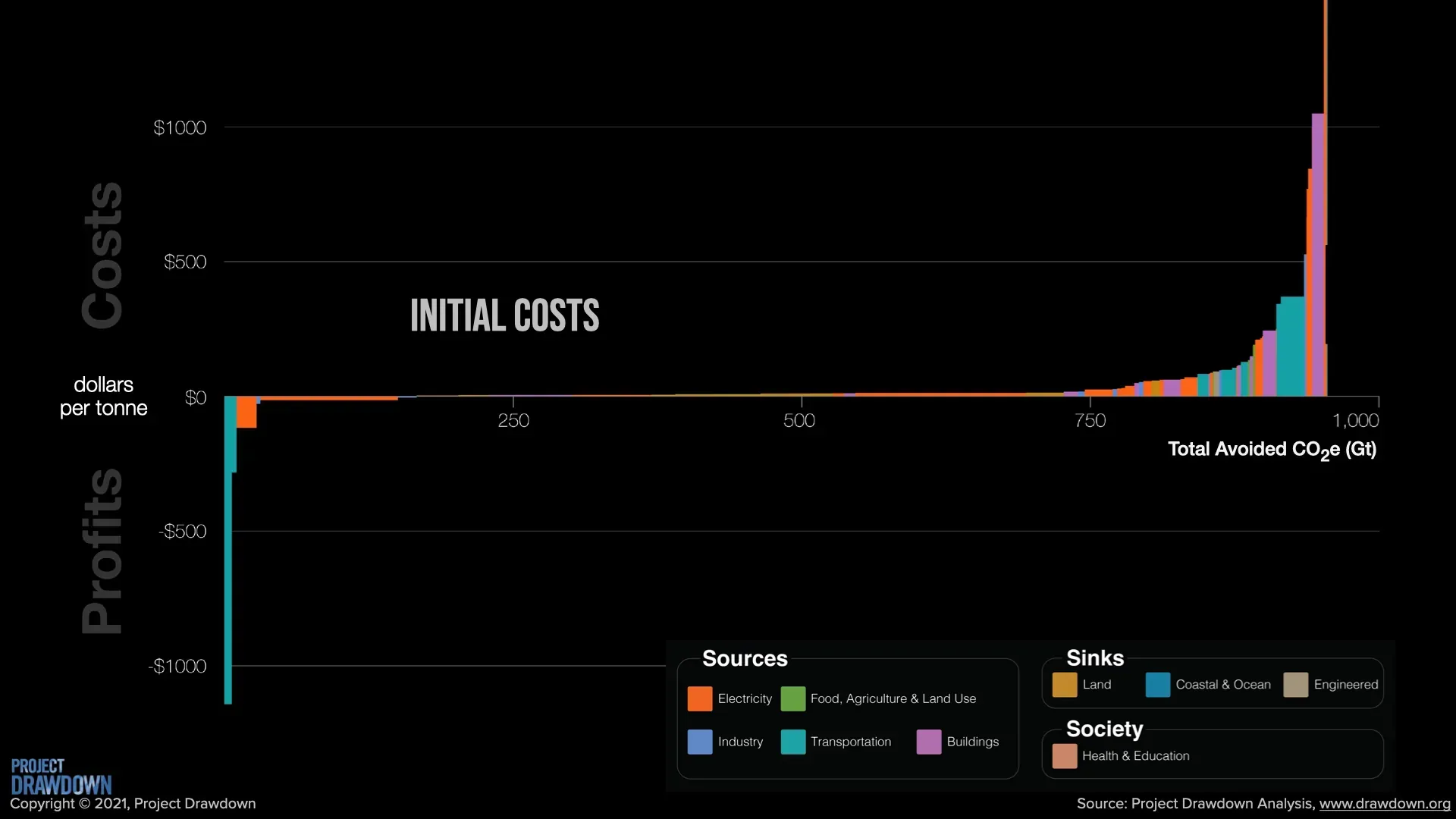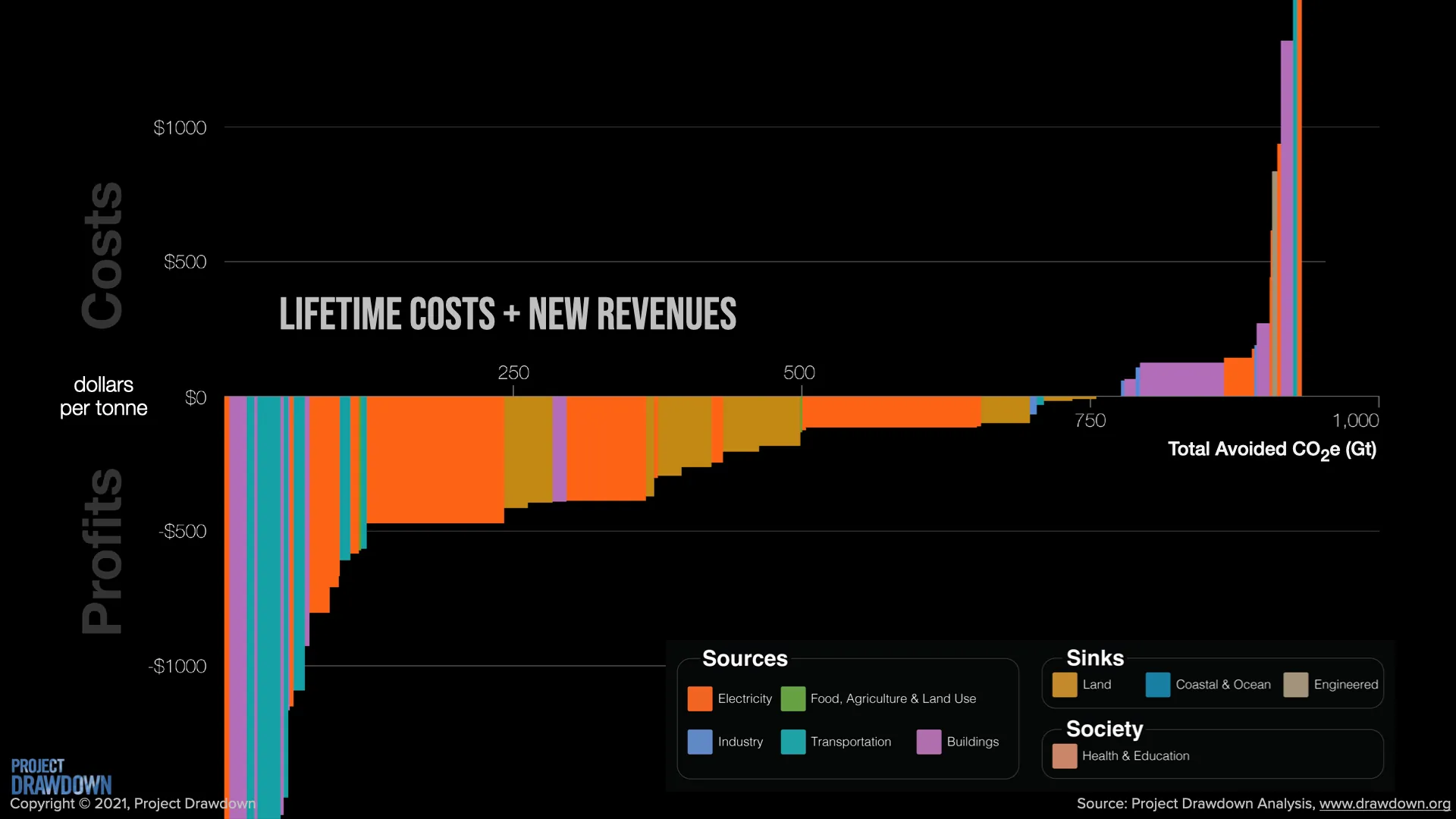
Climate and Nature Science
Overview
The science is clear, taking bold climate leadership today not only safeguards the viability of your business operations in the long run but also enhances resilience, reputation, and competitive advantage. On the other hand, delaying action will only worsen the challenges and limit opportunities for future generations.
In this section, you will learn climate science facts from the United Nations Intergovernmental Panel on Climate Change (IPCC), the global scientific body that assesses climate change science and provides a robust foundation for informed decision-making.
The climate is changing
Climate change refers to the long-term warming of Earth's temperatures and shifts in weather patterns, driven primarily by human activities, chiefly the burning of fossil fuels. When fossil fuels burn, they release greenhouse gases (GHGs) - mostly carbon dioxide (CO2). GHG acts like a blanket, trapping extra energy in the atmosphere near the Earth's surface. This causes the planet to heat up.
While people in their 50s to 70s today have mostly experienced the effects of a slow but steady rise in global temperatures, their children and grandchildren are born into a world of rapidly rising temperatures. Over the past century, global temperatures have risen rapidly, with the period between 2014 and 2023 averaging 1.2°C warmer than the late 19th century. This warming has led to significant environmental changes, including more extreme weather, melting ice, rising sea levels, and damage to ecosystems like coral reefs. The impacts of climate change are already severe, and they will worsen as temperatures continue to rise.

Extract from ‘Adverse impacts from human-caused climate change will continue to intensify’. IPCC, 2023. Synthesis Report of the Sixth Assessment Report
Scientific studies from the IPCC, the WMO and others show that limiting global warming to below 1.5°C will significantly reduce the risks, adverse impacts, and related losses and damages from climate change. Failing to do so will lead to increasingly frequent and dangerous extreme weather events including heatwaves, droughts, wildfires, and heavy precipitation and flooding. Exceeding 1.5°C could also trigger multiple climate tipping points (see ‘Broader context’ section below).
Rising temperatures are impacting species and ecosystems worldwide, especially vulnerable ones like coral reefs, mountains, and polar regions. Climate change may threaten up to one in six species globally. At the same time, human activities—particularly land and sea use—are destroying nature at an unprecedented rate. This includes converting forests, wetlands, and other habitats for agriculture and urban development.
According to the IPCC, limiting global warming to 1.5°C means that GHG emissions must decrease from 2019 levels by 43% by 2030 and 84% by 2050.
Climate change – the impact on business
Climate change and nature loss impact all types of business. Although the direct link may not be immediately evident in your business sector, the effects of climate change and nature loss have far-reaching implications.
Take the IT industry as an example: the risks of climate change to core business may be less apparent, but is experienced through increased energy consumption and costs impacting operations and profitability; the risks to physical infrastructure, such as data centres, due to extreme weather events and rising sea levels; disrupted supply chains leading to delays and increased costs for essential components; or shifts in customer expectations towards sustainability that can influence buying decisions and brand reputation.
Take a look at the IPCC’s sustained climate change impacts, and consider how these could impact your organisation.

Extract from ‘Adverse impacts from human-caused climate change will continue to intensify’. Source: IPCC, 2023. Synthesis Report of the Sixth Assessment Report
Rising to the challenge
The world must rapidly shift away from unabated burning of fossil fuels — the number one cause of the climate crisis.
As a board director, you can ask the question about whether climate change is a material business issue for your business and explore pathways for your organisation to transition away from fossil fuel use within its operations and across its value chain. You can also focus on delivering climate action through mitigation and adaptation.
- Climate mitigation refers to reducing or preventing GHG emissions (for example by switching to renewable energy sources, innovative agricultural practices, and reducing deforestation)
- Climate adaptation aims to decrease vulnerability of human and natural systems to the risks and impacts of climate change (through, for example, improving infrastructure, enhancing ecosystem services, and implementing early warning systems).
There are multiple approaches that your organisation can take to mitigate and adapt to climate change. The figure below offers some examples of climate responses, their cost in the short-term and their feasibility to limiting global warming to 1.5C:
Broader context
Current levels of global warming are about 1.3°C above pre-industrial levels , with current plans and policies projected to lead to 2.6°C to 3.1°C of global warming this century.
3°C of warming would be catastrophic. Populous cities like Miami, Dhaka, Shanghai, Hong Kong and a hundred others could be flooded or entirely under water by the end of the century.
As global temperatures continue to rise, they could trigger nine 'climate tipping points,' which could cause climate change to spiral sharply and irreversibly beyond our control.
The nine ‘climate tipping points’ will be caused by ice sheet melting, ocean circulation changes and living ecosystems shifts.
Carbon brief tipping points - open in a new window
On the other hand, international cooperation and technological advances are fostering positive tipping points that can help us solve the climate crisis:
A positive tipping point happens when a zero-carbon solution advances to a point where it outcompetes the existing high-carbon solution. Once reached, self-reinforcing ’feedback loops’ (such as learning by doing effects, economies of scale, the emergence of complementary technologies, and the spread of new social norms) drive exponential growth in the adoption of the new solution and a rapid decline of the old.
For example, green ammonia, electric vehicles and plant-based proteins are already causing a breakthrough effect.
How to take action
Invite your organisation’s board to reflect on the following questions:
- Is our organisation taking action to phase out fossil fuels use, both in its operations and across the value chain?
- Does our organisation measure its full carbon footprint across its operations and across the value chain?
- Has our organisation set science-based targets, both long-term and in the interim, to reduce its carbon emissions?
Mark section as complete
Join a Chapter
Your regional Chapter can support you with tools and resources to enable effective corporate climate governance in your region.
Join a ChapterResources
- Read this summary on the latest climate science is provided by the IPCC in it’s Synthesis Report of the Sixth Assessment Report.
- More information on climate tipping points in ‘How 16 Tipping Points Could Push Our Entire Planet Into Crisis’ and ‘Johan Rockström: The tipping points of climate change — and where we stand’
- More information on positive tipping points in ‘The Breakthrough Effect’ and Climate crisis: How 'positive tipping points' could save the planet


